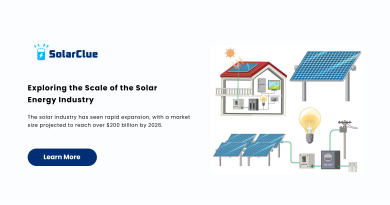Solar Energy for Rural and Remote Areas: A Path to Sustainable Power
Access to reliable electricity remains a challenge in many rural and remote areas worldwide, including parts of India. Traditional grid connections can be costly, unreliable, and often impractical due to geographical barriers. This is where Solar Energy comes into play as a game-changing solution. By harnessing sunlight through a solar power system, communities can enjoy consistent power, improve their quality of life, and open doors to economic growth.
Table of Contents
- 1 Why Solar Energy is Ideal for Rural and Remote Locations
- 2 Applications of Solar Power in Rural Areas
- 3 Overcoming Challenges in Implementing Solar Solutions
- 4 Government Initiatives Supporting Rural Solar Energy
- 5 Future Outlook for Solar Energy in Rural Development
- 6 Tips for Rural Communities Considering Solar Energy
- 7 FAQs on Solar Energy for Rural and Remote Areas
Why Solar Energy is Ideal for Rural and Remote Locations
Solar power offers several unique advantages that make it an ideal choice for off-grid and underdeveloped areas. The installation of solar panel systems eliminates the need for extensive transmission lines, reducing infrastructure costs. Moreover, the sun is a readily available, renewable resource, ensuring a sustainable and eco-friendly source of electricity.
Key Benefits of Solar Energy in Remote Areas
-
Accessibility: Even in the most isolated regions, sunlight is abundant and accessible.
-
Cost Savings: Once installed, a solar power system has minimal operational costs.
-
Environmental Benefits: Solar energy is clean, reducing reliance on fossil fuels.
-
Energy Independence: Communities no longer depend on unreliable or costly external power supplies.
Applications of Solar Power in Rural Areas
Solar panel systems can power a variety of essential services in rural and remote settings:
Solar-Powered Water Pumps
Agriculture is the backbone of rural economies. Solar-powered water pumps help farmers irrigate crops without depending on expensive diesel pumps, reducing costs and increasing productivity.
Solar Home Lighting Systems
Reliable lighting allows children to study after dark and families to engage in productive activities, improving education and household income opportunities.
Solar-Powered Healthcare Facilities
In areas where electricity is scarce, solar energy ensures medical equipment, refrigerators for vaccines, and lighting are always available, improving public health outcomes.
Solar for Communication and Connectivity
From powering mobile towers to charging stations for devices, solar systems bridge the digital divide, enabling better access to information and services.
Overcoming Challenges in Implementing Solar Solutions
While the benefits are immense, there are challenges to adopting solar power in rural areas:
-
Initial Costs: Although prices are decreasing, the upfront investment can still be significant.
-
Maintenance: Communities need training to maintain and repair systems.
-
Financing: Access to loans and subsidies can be limited.
Government Initiatives Supporting Rural Solar Energy
Several government schemes promote the adoption of solar power systems in rural India. These include subsidies for solar panels, financing options for farmers, and incentives for community-based solar microgrids. Such programs aim to make renewable energy more accessible and affordable.
Future Outlook for Solar Energy in Rural Development
The potential for solar energy in rural and remote development is enormous. With continuous advancements in technology, falling installation costs, and increased government support, solar power can play a pivotal role in achieving energy access for all. Off-grid solar panel systems, hybrid models, and solar battery storage will further enhance energy reliability and independence.
Tips for Rural Communities Considering Solar Energy
-
Assess your energy needs before investing in a solar power system.
-
Explore government subsidies and financing programs.
-
Work with certified solar installers to ensure quality and safety.
-
Train local residents for basic operation and maintenance.
FAQs on Solar Energy for Rural and Remote Areas
1. Why is solar energy suitable for rural areas?
Because it is renewable, widely available, and can be deployed without the need for expensive grid infrastructure.
2. What is the lifespan of a solar panel?
Most solar panels last 25–30 years with proper maintenance.
3. Can solar power work during cloudy days?
Yes, although output may decrease, modern panels can still generate electricity in low-light conditions.
4. How much does a rural solar power system cost?
Costs vary based on system size and battery storage, but government subsidies can significantly reduce the price.
5. Can solar energy power an entire village?
Yes, with a properly designed solar power system, entire communities can be powered sustainably.
By empowering rural and remote communities with Solar Energy, we can illuminate homes, drive economic progress, and reduce environmental impact. The future of rural electrification lies in the sun—clean, renewable, and accessible for all. To explore the best solar power system solutions for your needs, visit solarclue.com or check our detailed guides at blog.solarclue.com today and take the first step towards a brighter, sustainable future.




